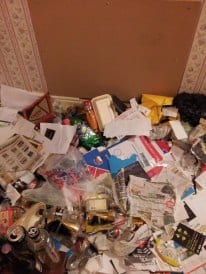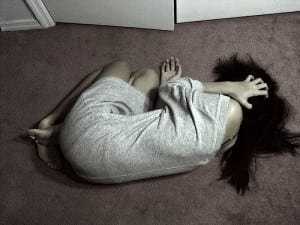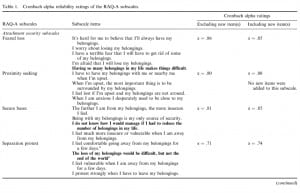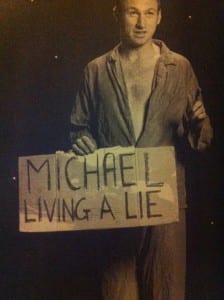Well that’s our performances finished, can’t believe it’s over. Things have changed and developed so much from our first tour of the house on west parade. All of our ideas have expanded so much. When we first chose the living room we were concentrating on our feelings for that room, but as we progressed we realised that the living room is so much more then just a place to ‘relax’ and feel at ‘home’ because there is so many different homes. Our first initial thought were so different to our final performance but in some sense very similar we originally wanted to create an experience for an audience that would be something that is familiar to them, doing things that they would do on a daily basis in their living room, and also bringing back memories of their experiences. Exploring things like watching television ordering pizza and having a glass of wine. We then realised that was quite typical and showing someone life in a living room isn’t necessarily about doing obvious things, maybe it was more then that. Stripping back all the technology and conversation and sitting there in silence gave the audience a chance to reflect on their experiences, It became more about us as performers and the notion that our body images a sort of still picture, were more important then doing something very typical of a living room “I strongly believe that the most powerful tool today is performance is the artist herself”. ((Conroy Colette (2010) Theatre & The body London:palgrave macmillan))
Sitting in silence and being completely still is harder then I first thought, but the more audience members we had it became easier, by sitting still in silence you begin to really feel the value of silence and find yourself in a relaxed state. “What kind of mental exercise should the performer have to do to prepare?” ((Conroy Colette (2010) Theatre & The body London:palgrave macmillan)) is one the questions Colette Conroy asks in the book “theatre and the body” I feel that this question relates perfectly to our performance because we did not have to prepare physically like in other performance we needed to prepare ourselves mentally. Our minds had to be cleared and we needed to concentrate.We almost became a work of art, a still image that the audience could interpret how ever they wanted to. In my opinion because we had the paused image on the screen it was like someone had pressed pause on our lives.
One thing that I feel went well was, was something we didn’t anticipate because our performance was at night was when it became dark the only light was the light from the television and it reflected on the rubbish and created shadows and an outline of the clutter. This added to the affect that, like the rubbish was art in a some sort of form.
“Audience’s reactions to our room were very different to others in the house, it was very interesting to see how every different audience member did something different. Some people seemed as if they were very comfortable and explored the room as if it was exciting and others found it very daunting and uncomfortable to be in. One audience member could not stand the anticapation and tried to get out because you could see that she phyiscally could not stand that she didn’t know what was going to happen next. The clutter and rubbish shocked the audience even more, and you could tell they were trying to work out why it was there. I feel we filled the room well and had enough stuff to give the feel of a hoarders front room, but we still could have had more!

“A man walks across this empty space whilst someone is watching him and this is all that is needed for an act of theatre to be engaged” (( Brook, Peter (1968) The Empty Space, London:pelican books)) . I feel that this quotes sums our performance ideas perfectly. Forgetting for a moment that our room was filled with clutter. The fact that we were sat amongst it as still images is our ‘perfomance’ we did not need to move because the images were enough to create tension and questions for the audience members.



